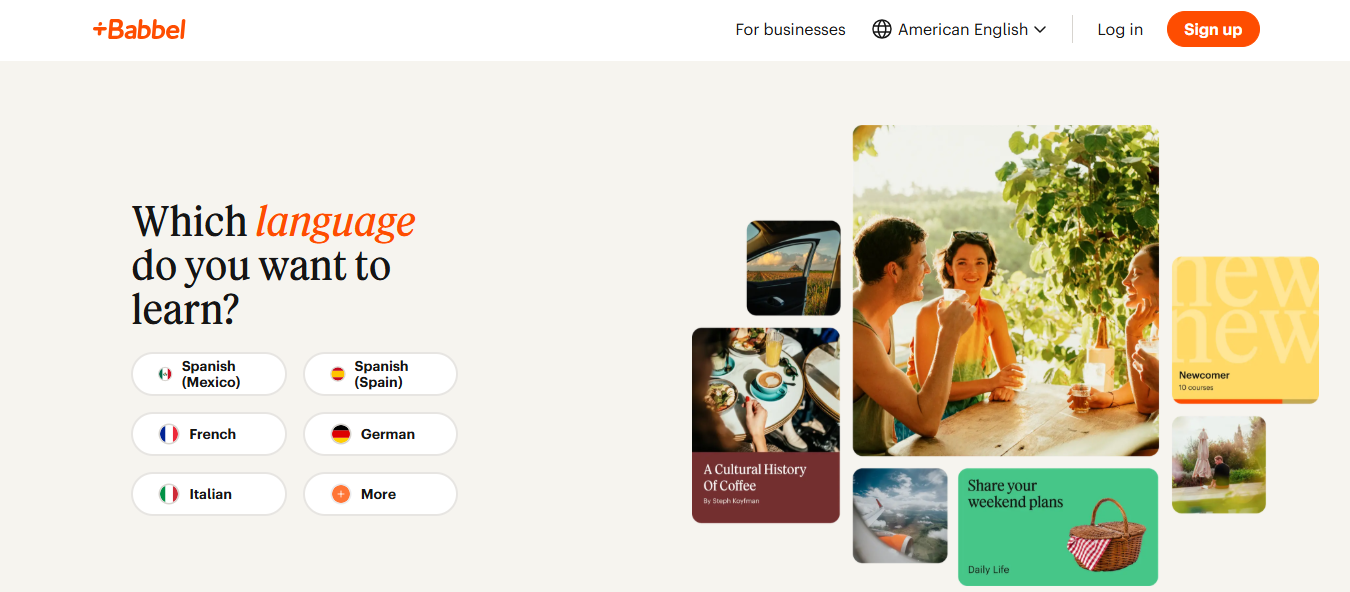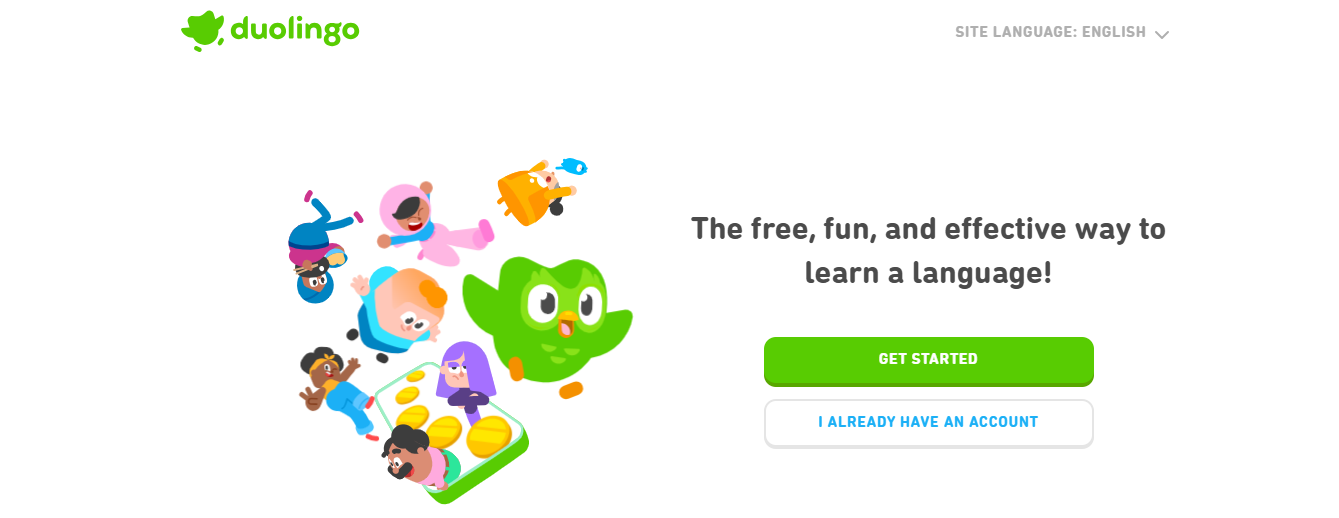Babbel vs Duolingo (Which Language App Is Better for Real-World Fluency?)

Michael Xing, Founder of Pingo AI
Picking the right tool can feel overwhelming when you want to learn a new language, especially among the top language learning apps that promise quick progress and streaks. We compare Babbel vs Duolingo across lesson structure, grammar explanations, vocabulary building, speaking practice, speech recognition, pricing, and user experience so you can see which app supports conversational practice and real-life use. Use this guide to answer common questions like which language app is better for real-world fluency.
If you're still weighing which AI language learning app is better for real-world fluency, BST Lagree's Lagree in London offers a focused routine that sharpens attention and builds the consistency you need to make any app work for you.
Babbel vs Duolingo at a Glance

Which app gives structured lessons, and which one leans on game mechanics? Babbel offers 10 to 15-minute, teacher-designed lessons that focus on:
- Real-world phrases
- Grammar explanations
- Conversational practice across about 14 languages
Duolingo uses short drills, streaks, and rewards to keep learners logging in daily, offering more than 30 languages and placing a heavy emphasis on repetition and quick wins. Compare curriculum depth, speaking practice, cost structure, and habit features to decide which fits your learning goals and schedule.
Babbel: Structured Lessons Centered on Conversation
Lessons follow a precise sequence that builds grammar and sentence structure into usable conversation. You get:
- Targeted vocabulary
- Short grammar notes within lessons
- Pronunciation practice
- A review system that spreads practice over time for better retention
Content quality depends on the language; some courses stop before advanced levels. Babbel runs behind a paid model with monthly and annual subscriptions and offers web and mobile apps, plus placement tests to set your starting level.
Duolingo: Game-Driven Practice That Keeps You Engaged
The app uses points, streaks, levels, and playful feedback to motivate daily practice. Exercises cover reading, listening, writing, and occasional speaking prompts, while features like stories, podcasts, and chatbots add variety for selected languages. Duolingo provides a robust free tier supported by ads and a subscription option to remove ads and unlock extras.
Course depth varies widely: high-demand languages get fuller trees, while niche languages may stay basic.
Head to Head: Curriculum, Grammar, Speaking, Progress Tracking
- Curriculum and lesson flow: Babbel follows a structured curriculum built by linguists; Duolingo uses a modular tree of short exercises that you unlock.
- Grammar and explanations: Babbel embeds explicit grammar tips and context; Duolingo keeps grammar brief and practice focused.
- Speaking and pronunciation: Babbel emphasizes conversational phrases and offers speech recognition; Duolingo includes speaking drills and AI chat options, but less depth.
- Content breadth and language choice: Duolingo covers many more languages; Babbel focuses on fewer, more polished courses.
- Motivation and engagement: Duolingo excels at habit building through gamification; Babbel relies on lesson design and clear learning paths to sustain progress.
- Pricing and access: Duolingo has a free experience with ads plus premium tiers; Babbel is subscription-based with periodic trial options.
- Extra resources: Duolingo adds podcasts, stories, and an English certification test; Babbel offers live class add-ons and cultural notes in lessons.
Who Fits Each App Best? Ask Yourself These Questions
- Do you want a fun daily habit with broad language choice and a free option? Duolingo suits casual beginners and learners who need encouragement to practice every day.
- Do you prefer structured lessons, clear grammar guidance, and practical conversational skills? Babbel serves learners focused on real-world communication and steady progress through a defined curriculum.
- Want both habit and depth? Try Duolingo for initial motivation, then layer Babbel for structured practice and grammar. If you aim for advanced fluency, plan to add tutors, immersion, or targeted speaking practice beyond either app.
How Does Babbel Work?

Babbel launched in 2007 and was built by language experts who prioritize practical use over memorizing lists. Lessons focus on vocabulary and grammar taught in context, so you learn to speak in real situations rather than recite isolated phrases.
How You Start and Where You Go Next
Create an account, pick a language, and take a brief self-assessment that gauges confidence across skills. That quick check is not a complete placement exam, but it steers you toward relevant beginner or early intermediate lessons.
Lesson Design and Daily Practice
Each lesson runs short and focused so that you can finish one in ten to fifteen minutes. Activities mix listening, reading, writing, and speaking with immediate feedback, and grammar tips appear when they help you understand a pattern in use.
Content Sequence and CEFR Alignment
Babbel maps content to CEFR levels from A1 upward, depending on the language, and it labels courses like beginner or intermediate to show expected progress. You can follow a cumulative path or jump to specific topics for:
- Travel
- Work
- Social situations
Speaking Practice and Feedback
Speech recognition checks your pronunciation in many exercises, and spoken tasks appear early, so you practice producing phrases, not just selecting them. Expect repetition framed around meaningful dialogs to improve retention and fluency.
Review System and Memory Reinforcement
The app uses spaced repetition inside the new manager features so words and structures return at proper intervals. That steady recall beats cramming because you revisit items just as they are leaving memory.
Flexibility Versus Gamification
Unlike heavily gamified apps, Babbel favors structure over streaks and leaderboards, which many learners prefer when they want grammar explanations and clear progression. If you like bite-sized lessons with explicit grammar notes rather than point collecting, Babbel fits well.
Languages Offered and Course Pairs
Babbel offers 14 languages, including:
- Spanish
- French
- German
- Italian
- Russian
- Portuguese
- Turkish
- Dutch
- Swedish
- Norwegian
- Danish
- Indonesian
- Polish
- English
The English course is available for speakers of French, German, Italian, Polish, Portuguese, Spanish, Swedish, and Ukrainian. Some combinations allow you to study a language through another base language.
How it Compares with Duolingo and Other Apps
When people compare Babbel vs Duolingo, they often point to Babbel’s structured grammar explanations and conversation focus versus Duolingo’s game-like interface and broader language selection. Babbel relies less on gamification and more on guided practice with:
- Speech checks
- Progress tracking
- Precise lesson sequencing
At the same time, Duolingo emphasizes daily micro practice, crowd-sourced content, and a free tier that many users try first.
Subscription Model and Accessibility
Babbel runs on a subscription model with offline lesson downloads and a polished mobile and web interface. That paid approach supports curated content from linguists and predictable lesson quality rather than relying mainly on user-generated material.
Who benefits most from Babbel
Beginners and early intermediate learners who want a steady foundation in grammar, vocabulary, and speaking perform best with Babbel. Ask yourself whether you want structure and clear explanations or a playful reward system, and choose the tool that matches how you study.
Conversation-First AI Learning
Pingo's AI language learning app is redefining language learning through conversation-first practice powered by expressive AI. Start speaking with Pingo for free today and experience how easy it can be to learn a language by talking.
Related Reading
- Top Language Learning Apps
- How Much Is Duolingo Max
- How Much Does Babbel Cost
- Rosetta Stone vs Duolingo
- Best Apps to Learn Spanish
- Best Apps to Learn Japanese
- Busuu vs Duolingo
- Duolingo Alternatives
How Does Duolingo Work?

Duolingo breaks language learning into short, focused practice sessions that train reading, writing, listening, and speaking. You open the app, pick a module in the course path, and complete 10 to 12 quick exercises that mix translation, fill in the blank, match the word to the picture, and spoken or heard phrases.
The system uses repetition, immediate feedback, and spaced review to move vocabulary and sentence patterns from short-term memory toward longer-term recall. Want steady practice or a quick five-minute session after lunch? The app scales to either choice.
Free Access Versus Super Duolingo: What Changes for You
Duolingo offers a robust free tier with ads, limited hearts, and access to the full course tree. Super Duolingo removes ads and gives unlimited hearts, so mistakes do not stop your session. Subscribers also get access to the:
- Practice Hub for targeted review
- Legendary challenges that test mastery
- Offline downloads
- Other learning perks
Compare this to Babbel, where most content sits behind a subscription and lessons often include explicit grammar explanations and conversational focus. Which payment model fits your study style and budget?
Course Design and the Learning Tree: How Lessons Flow
Each language is organized into a sequence of topics, sometimes called a skill tree. Topics cover themes such as basics, travel, work, or food. Lessons in a topic have multiple levels that you upgrade by earning crowns or completing levels. Finish levels to unlock new topics and hit higher difficulty tiers that introduce new vocabulary and more complex sentences.
The system also uses periodic review prompts to keep weaker items in rotation instead of letting them drop out of practice.
Exercise Types, Speech Tools, and How the App Listens
You will see listening tasks, typed translations, multiple choice, match the phrase to the picture, and spoken responses that use speech recognition. Duolingo plays audio clips and asks you to type or select what you hear. For speaking, it asks you to repeat phrases and checks pronunciation against an automated model.
The voice feedback can catch gross pronunciation errors and boost speaking confidence, but it does not replace a human tutor or conversation partner for fine-tuned fluency.
Gamification Features That Drive Daily Habits
The app rewards activity with XP points and leagues that rank you against other learners each week. Streaks track consecutive practice days, and hearts act as a life system where mistakes cost hearts and require review to continue. Crowns or skill levels show depth of practice inside a topic; practice challenges and timed lessons add pressure and variety.
These game elements increase engagement and nudge consistency, especially for users who respond to small wins and competition.
How Duolingo Handles Spaced Review and Personalization
Duolingo adapts by surfacing items you miss and by offering targeted practice in the Practice Hub or through review sessions that replenish hearts. The app blends the new introduction of items with spaced repetition cues so that items you struggle with appear more often. Its adaptive algorithm personalizes what appears in a session based on recent errors and overall progress, though it focuses more on exposure and recall than detailed grammar drills.
Where Duolingo Excels and Where It Falls Short Compared to Babbel
Duolingo shines at accessibility, short practice sessions, and motivating learners through game mechanics and a free pathway. It builds vocabulary fast and keeps users consistent. Babbel offers:
- More structured grammar instruction
- Explicit explanations
- Lessons designed around realistic dialogues with cultural notes
In a Babbel vs Duolingo comparison, Babbel often wins for grammar depth and conversational framing, while Duolingo wins for:
- Free access
- Habit building
- Broad language offerings
Which better matches your goal, faster vocabulary growth or systematic grammar and speaking practice?
Practical Tips to Get Real Gains from Duolingo
- Set a daily XP target and pair Duolingo with a grammar resource or conversation practice to close the gaps the app leaves.
- Use the Practice Hub to focus on weak areas, enable audio and speak along with clips, and download lessons for offline study.
- Try mixing timed practice with slower active translation to build different skills.
Want better speaking ability? Add regular sessions with native speakers or tutors to convert automated pronunciation practice into usable fluency.
Babbel vs Duolingo: Key Feature Comparison

Babbel structures lessons around real conversation and grammar. You get the following:
- Short dialogues voiced by native speakers
- Grammar tips placed where they matter
- Contextual examples that show how a phrase works in everyday speech
Structured Learning for Practical Fluency
The review manager uses spaced repetition to help retention, and lessons progress logically from simple phrases to complex sentence patterns. Content designers with language teaching experience craft courses to ensure that translations and examples read naturally and sound correct. Who benefits most from this approach if your goal is usable conversation and clear grammar?
Gamified Engagement: How Duolingo Keeps You Coming Back
Duolingo turns study into a game.
- It rewards streaks
- It awards XP
- It uses leaderboards
- It hands out crowns as you level up skills
Quick Drills vs. Deep Grammar
Lessons arrive as short drills that feel like micro practice, and immediate feedback keeps motivation high. Visuals and sound cues make practice feel lively, which helps form a daily habit. That design favors quick vocabulary gains and steady daily practice more than deep grammar understanding. Do you want high motivation and daily repetition more than structured grammar lessons?
Curriculum and Progression: Organized Course Versus Skill Tree
Babbel follows a course like a traditional classroom. Lessons build on one another with a precise sequence and placement of tests that set you at the right level. You progress through modules that predictably stack grammar and vocabulary. Duolingo groups content by theme in a skill tree that you unlock.
That model gives flexibility and variety, but you can jump between unrelated topics and miss systematic grammar building. Which path matches your learning style, a step-by-step course or a flexible, theme-based tree?
Design and Interface: Clean and Focused Versus Bright and Catchy
Duolingo uses bright colors, animations, and playful icons to create an upbeat interface. Every correct answer triggers a positive sound and animation that reinforces practice. Babbel keeps the interface minimal and focused on content, with fewer distractions and clearer lesson flows. Both apps work well on the web and mobile, and both offer offline downloads with a subscription.
If you prefer stimulation and visual reward, which interface will hold your attention during regular study sessions?
Accuracy and Natural Speech: Quality Translations and Realistic Dialogues
Babbel prioritizes natural phrasing and accurate translations. Sentences and dialogues sound like things a native speaker would actually say, which reduces the risk of learning odd constructions. Duolingo sometimes uses literal or playful sentences that can confuse learners about proper usage.
Community-created content and rapid expansion can introduce inconsistencies on Duolingo, while Babbel relies on professionally developed material. How important is natural phrasing and real-life usage for your speaking and listening goals?
Cost and Access: Free Entry Versus Paid Curriculum
Duolingo offers a robust free tier that removes financial barriers and supports casual learning across many languages. Paid tiers add perks like:
- No ads
- Unlimited hearts
- Offline lessons
- Additional practice features
Subscription vs. Free Learning Model
Babbel requires a subscription after a trial, and that fee funds curated content, structured courses, and options such as live online classes. Duolingo suits learners who want to explore multiple languages at low cost; Babbel suits learners ready to invest in a guided curriculum. Which trade-off matters more, free broad access or paid focused instruction?
Related Reading
- Memrise vs Duolingo
- Best Apps to Learn French
- Lingodeer vs Duolingo
- Pimsleur vs Babbel
- Jumpspeak vs Duolingo
- Best Apps to Learn Mandarin
- Best Apps to Learn Arabic
- Best Apps for Learning English
- Best Russian Learning Apps
Which Language Learning App Should You Choose?

Choose based on concrete goals. Need survival phrases for travel, or do you want to master grammar and speak confidently? Do you prefer short daily drills or longer guided lessons with explanations? Match the app to the outcome you care about:
- Vocabulary building
- Grammar mastery
- Pronunciation accuracy
- Live conversation practice
Babbel: Structured Lessons and Grammar That Build Real Skills
Babbel delivers lesson plans organized like mini courses. Each unit teaches with clear explanations and pronunciation support, including:
- Grammar rules
- Useful phrases
- Everyday dialogues
Systematic Progress and Focused Grammar
The app uses progressive lesson structure, review cycles, and placement tests so you move through beginner to intermediate levels in a logical way. Strengths include:
- Focused grammar practice
- Realistic dialogues
- A curriculum designed for steady progress
Expect subscription access, offline downloads, and lessons that reward consistent study. Want a methodical path through grammar and context that prepares you for everyday conversations?
Duolingo: Gamified Practice for Beginners and Busy Schedules
Duolingo makes language practice fun and habit-forming with short exercises, streaks, and game mechanics. It helps beginners build vocabulary and basic sentence patterns through repetition and spaced review. The free tier covers many languages, while Duolingo Plus removes ads and adds offline access.
Speed and Retention Over Deep Practice
Weaknesses show up when you need deep grammar explanations, nuanced pronunciation training, or extended speaking practice; the app focuses on speed and retention rather than in-depth conversation. Looking for bite-sized daily sessions that you can keep up with on any schedule?
Pingo: AI Conversation Practice That Feels Like Talking with a Native Speaker
Pingo uses expressive AI to simulate fundamental interactions from day one. You practice ordering food, asking directions, or having casual chats with an adaptive system that responds naturally. The app gives beginners and advanced learners:
- Personalized feedback
- Targeted exercises
- Two dynamic modes suited
Immersive Practice for Real-World Fluency
Speech recognition and contextual correction focus on pronunciation and fluency, not rote translation. Pingo fits learners who want immersive speaking drills, scenario-based practice, and rapid confidence in real-world situations. Start speaking with Pingo today for free and experience how effortless real-world language learning can be.
Babbel vs Duolingo vs Pingo: Pros and Cons at a Glance
- Babbel: Strong grammar lessons, structured curriculum, realistic dialogues, paid subscription. Best for deliberate learners and those who want context and rules.
- Duolingo: Free tier, gamified learning, quick sessions, extensive language list. Best for beginners and habit building, weaker on advanced speaking and grammar depth.
- Pingo: AI-powered conversation practice, adaptive feedback, real-world scenarios. This is best for those who need speaking practice and honest dialogues, with modern speech recognition and personalized correction.
How to Decide by Learning Style and Goals
If you want conversational confidence fast, prioritize apps that offer speaking exercises and corrective feedback. If you value clear grammar explanations and a paced syllabus, pick a course-style product. If you need habit formation and frequent short reviews, use a gamified tool.
Combine types when you can: structured lessons to learn rules, daily drills to keep momentum, and AI conversations to build speaking fluency.
Pricing, Commitment, and What to Expect From Subscriptions
Expect monthly or annual plans for deeper features. Free tiers often cover basics but limit:
- Downloads
- Offline use
- Conversational AI minutes
Trial periods let you test pronunciation tools and curriculum flow before you pay. Check for family plans, student discounts, and refund policies if you plan to commit to full courses.
Practical Routine: Use Multiple Tools Without Wasting Time
Start with a placement test to gauge level. Split sessions:
- 10 minutes on vocabulary and spaced repetition
- 20 minutes on structured grammar lessons
- 15 minutes of live or AI conversation practice
Track progress with measurable goals: hold a five-minute conversation, read a short article, or write an email in the language. Want a routine that mixes structure, habit, and conversation?
Start Learning A Language with Pingo for Free Today

Pingo flips the usual routine of flashcards and rote drills. You start conversations that mirror real life, from ordering food to chatting with new friends. The app uses expressive AI to keep dialogue flowing, so you practice speech, listening, vocabulary, and useful phrases together. Want to feel less nervous speaking in public or on a trip?
Real World Dialogue with Expressive AI
The core is a simulated, context-rich conversation that adapts to your choices. Speech recognition and pronunciation feedback work in tandem with the AI to correct phrasing and intonation in real time. That creates more natural practice than isolated grammar drills, which often leave learners shaky when a real person answers back. How would you use that kind of practice on a commute or before a quick meet-up?
Adaptive Feedback and Personalized Practice
Pingo tracks where you hesitate, which grammar forms you miss, and which words you repeat. The app then customizes exercises, spaced repetition items, and speaking drills to close those gaps. This looks like a personalized curriculum with progress tracking, placement style checks, and review sessions that focus on actual speaking outcomes rather than only checkpoints.
Two Modes: Beginner Friendly and Advanced Ready
Beginners get guided, scaffolded dialogues that introduce high-frequency vocabulary and basic grammar in context. Advanced learners access open-ended scenarios, fast-paced role play, and nuanced cultural cues so they push fluency and nuance. Both modes scale with your level and goals, making it simple to switch from basic survival phrases to confident conversation in small talk or professional settings.
How Pingo Stacks Up Against Babbel and Duolingo
Duolingo focuses on bite-sized, gamified lessons that reward streaks and quick vocabulary gains. It excels at engagement and broad exposure but often leaves speaking practice light. Babbel offers structured lessons and more precise grammar explanations with teacher-informed content, but its speaking practice can feel scripted and limited.
Realistic Spoken Practice and Cost Options
Pingo centers on realistic spoken interaction. That gives learners more targeted pronunciation feedback, immersive role play, and adaptive speaking drills compared with the flashcard style or grammar-first approaches. Concerned about cost or subscription models? Pingo offers a free starting tier, with paid plans for deeper personalization and extended lesson packs, similar to the freemium or subscription models you may know from other apps.
Practical Features That Matter to Everyday Learners
Expect short sessions designed for mobile use, offline review for vocabulary and grammar notes, and a clear path from beginner to higher CEFR levels through speaking milestones. The interface:
- Records your responses
- Shows where you improved
- Recommends focused sessions to build confidence
Want more human contact? Pingo can complement live tutoring or group conversation labs by keeping your daily speaking muscle active.
Start Speaking with Pingo Today
You can start with no cost and immediately join conversation practice tuned to real situations. Try a sample scenario, check your pronunciation results, and compare how fast your confidence grows compared with lesson-heavy apps like Babbel or gamified tools like Duolingo—what will your first five minutes of practice sound like?
Related Reading
- Best Apps for Learning Korean
- Best Apps for Learning Spanish
- Best Apps for Learning Portuguese
- Best Apps for Learning Spanish
- Best Apps for Learning Russian
- Best Apps for Learning Italian
- Best Apps for Learning German
- Best Apps for Learning English
- Best Russian Learning Apps